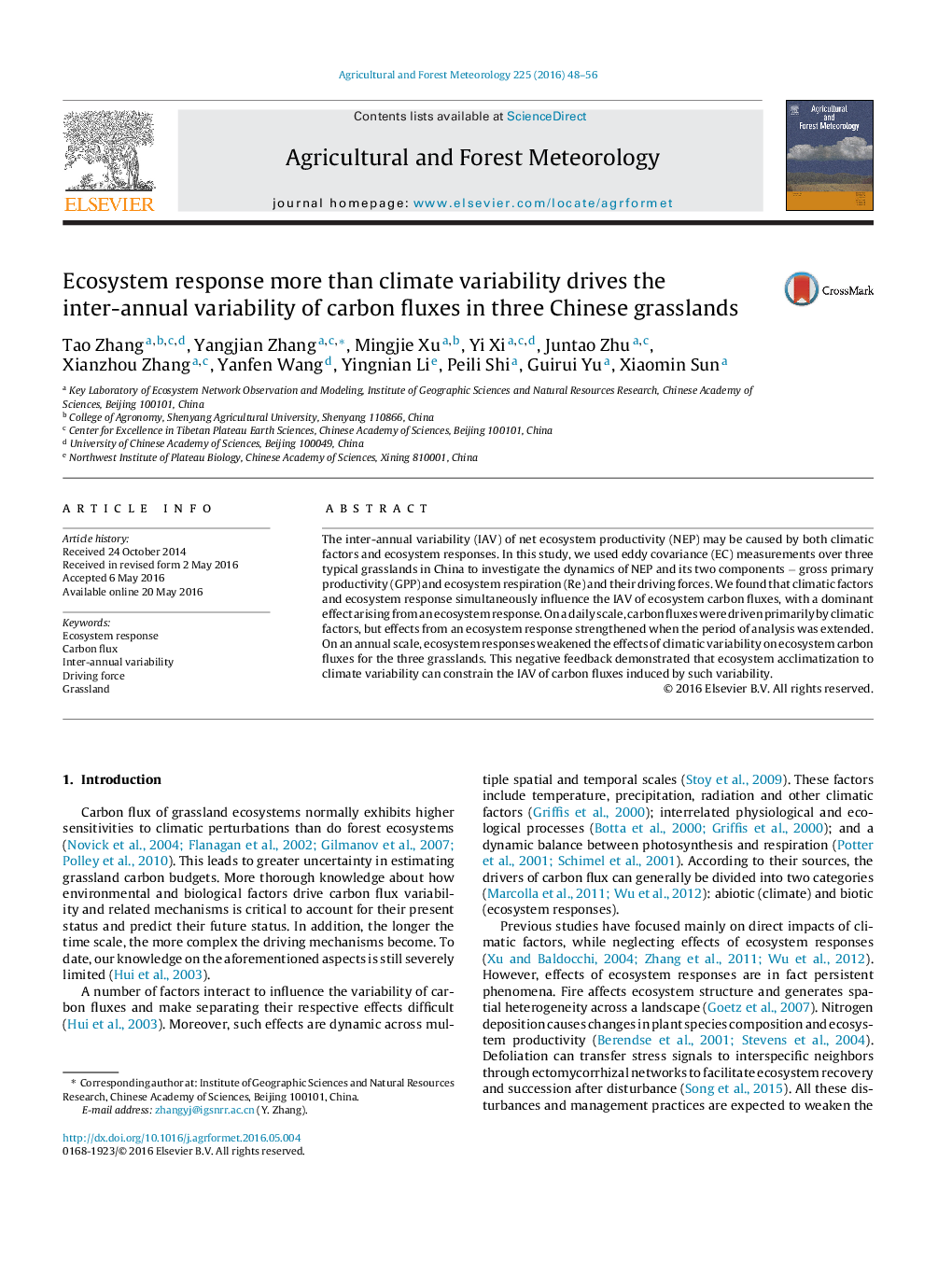| Article ID | Journal | Published Year | Pages | File Type |
|---|---|---|---|---|
| 81356 | Agricultural and Forest Meteorology | 2016 | 9 Pages |
•Sources of IAV were separated into climate effects and ecosystem responses.•The ecosystem responses dominated the IAV of carbon fluxes.•Ecosystem responses weakened the climate effects.
The inter-annual variability (IAV) of net ecosystem productivity (NEP) may be caused by both climatic factors and ecosystem responses. In this study, we used eddy covariance (EC) measurements over three typical grasslands in China to investigate the dynamics of NEP and its two components − gross primary productivity (GPP) and ecosystem respiration (Re) and their driving forces. We found that climatic factors and ecosystem response simultaneously influence the IAV of ecosystem carbon fluxes, with a dominant effect arising from an ecosystem response. On a daily scale, carbon fluxes were driven primarily by climatic factors, but effects from an ecosystem response strengthened when the period of analysis was extended. On an annual scale, ecosystem responses weakened the effects of climatic variability on ecosystem carbon fluxes for the three grasslands. This negative feedback demonstrated that ecosystem acclimatization to climate variability can constrain the IAV of carbon fluxes induced by such variability.
